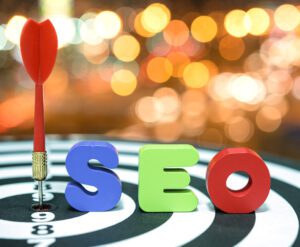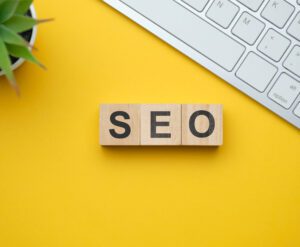Performance and traditional marketing are different approaches to promoting a business or product. Both have strengths and weaknesses, but the key to success is understanding when and how to leverage each strategy.
Performance marketing agencies use data-driven tactics to drive conversions and revenue for their clients. These agencies use a variety of channels, such as search engine marketing, social media advertising, and affiliate marketing, to deliver results. They also track and analyze data to optimize campaigns and improve performance over time.
On the other hand, traditional marketing agencies rely on more traditional channels such as television, radio, and print advertising to create brand awareness and customer loyalty. They may also use event marketing, direct mail, and public relations tactics to reach their target audience. These agencies focus on building brand recognition and establishing a solid client reputation.
In this blog post, we will explore the key differences between performance and traditional marketing, their pros and cons, and help you determine which approach might fit your business.
Performance Marketing vs. Traditional Marketing
Marketing has evolved significantly over the years, and today, businesses have many options for promoting their products and services. Two prominent approaches that often come up for consideration are performance marketing and traditional marketing. These two strategies have unique advantages and disadvantages, making it essential for businesses to understand their differences to make informed decisions.
Performance Marketing
Performance marketing is a data-driven approach focusing on measurable, quantifiable results. Unlike traditional marketing, where success may be harder to track, performance marketing leaves no room for ambiguity. Every campaign and tactic is designed to achieve specific, measurable goals, such as generating leads, increasing sales, or driving website traffic.
Essential Characteristics of Performance Marketing
Measurable ROI: The most significant advantage of performance marketing is its ability to provide real-time data and analytics. Marketers can track every click, conversion, and dollar spent, allowing for precise ROI calculations. This transparency helps businesses make data-driven decisions to optimize campaigns and maximize results.
Highly Targeted: Performance Marketing relies heavily on audience segmentation and targeting. Advertisers can precisely define their target audience, ensuring that their message reaches the right people at the right time.
Digital-Focused: Performance Marketing is closely associated with digital channels such as search engines, social media, email marketing, and display advertising. These platforms offer robust tracking and targeting capabilities.
Cost-Efficiency: Performance Marketing often involves paying for specific actions, such as clicks, leads, or conversions. Pay-per-click advertising models mean businesses only pay when users take desired actions, such as clicking an ad or purchasing. This results in a more cost-effective approach with upfront costs and uncertain outcomes than traditional methods.
Continuous Optimization: Marketers practicing performance marketing refine their strategies based on data analysis. This iterative process leads to improved campaign performance over time.
Performance Marketing Channels
Search Engine Marketing (SEM): Pay-per-click (PPC) advertising on search engines like Google is a common Performance Marketing channel. Advertisers bid on keywords and pay only when users click on their ads.
Social Media Advertising: Platforms like Facebook, Instagram, and LinkedIn offer performance-based advertising options, allowing businesses to target specific demographics and pay based on clicks or impressions.
Affiliate Marketing: In this model, businesses partner with affiliates who promote their products or services. Affiliates earn a commission for each sale or lead they generate.
Email Marketing: Performance-focused email campaigns track open, click-through, and conversion rates to measure success and optimize future efforts.
Content Marketing: Content-based campaigns can also be considered performance marketing if they are designed to drive specific actions, such as downloading a whitepaper or signing up for a newsletter.
Traditional Marketing
Traditional marketing has a long history. It is a well-researched, long-established, and proven method of communicating your message to the customer. It encompasses all advertising before the internet came along and shook things up. With traditional marketing, you will be reaching out to customers using offline means of communication. This includes printed advertisements in newspapers or magazines, broadcast advertisements on television and radio, or even printed flyers and business cards.
Traditional Marketing encompasses the conventional methods of advertising and promotion used for decades and focuses on brand awareness and exposure to a broad audience.
Essential Characteristics of Traditional Marketing
Mass Reach: Traditional Marketing is designed to reach a broad audience, making it suitable for building brand recognition and awareness.
Limited Measurability: Unlike Performance Marketing, measuring the direct impact of traditional marketing efforts can be challenging. Metrics like TV ratings and circulation figures provide some data, but they offer a different level of granularity than digital channels.
One–way Communication: Traditional Marketing often involves one-way communication, where the brand delivers a message to the audience without immediate interaction or feedback.
High Production Costs: Creating TV commercials, print ads, or billboards can be expensive, and production timelines can be lengthy.
Brand-Centric: Traditional Marketing focuses on creating a positive brand image and relies on the audience remembering the message when purchasing.
Comparison of Performance Market with Traditional Marketing
Digital marketing is generally more cost-effective and targeted, while traditional marketing can be more effective at reaching a larger audience. It’s essential to consider your budget and target market when deciding which type of marketing to use.
One of the most significant advantages of performance marketing is that it allows businesses to track the ROI of their marketing efforts in real time. This means businesses can see how much revenue each marketing campaign generates and make data-driven decisions about which campaigns to continue and which to discontinue. Performance marketing is also cost-effective, as businesses only pay for results.
On the other hand, traditional marketing can be more expensive, as it requires a constant investment to maintain results. In addition, traditional marketing can take longer to see results as it’s more focused on building brand awareness and reputation than driving sales or leads.
Ultimately, the best marketing strategy for your business depends on your specific goals, target audience, budget, and industry. Many businesses succeed in combining both Performance and Traditional Marketing, leveraging the strengths of each approach to maximize their reach and impact. Here are some considerations to help you make an informed choice:
Audience: Performance marketing may be the way to go if your target audience predominantly consumes digital media. However, traditional marketing can be effective for industries where traditional channels are still influential, such as luxury goods or real estate.
Budget: Consider your budget constraints. If you have a limited budget and need to demonstrate quick returns, performance marketing offers better cost control and measurement. Traditional marketing may require a more substantial upfront investment.
Goals: Define your marketing goals clearly. Are you looking for immediate sales and lead generation, or want to build long-term brand awareness? Your objectives will guide your choice.
Industry Trends: Stay updated on industry trends and changes in consumer behavior. The marketing landscape is dynamic, and what works today may not work tomorrow.
Testing and Iteration: Be bold, test both approaches and iterate based on the results. Marketing strategies are not one-size-fits-all; experimentation can help you discover what works best for your business.
In conclusion, choosing between performance and traditional marketing is not a one-size-fits-all decision. Both have strengths and weaknesses; the right approach depends on your specific circumstances and objectives. As the marketing landscape evolves, being adaptable and open to new strategies is vital to staying competitive in today’s dynamic business environment.





